When I think of the quintessential hike of the Eastern Sierras, Big Pine Lakes comes to mind. From the whispering groves of aspen to the turquoise waters of Second Lake, these alpine vistas just might literally take your breath away. Read on for the ultimate guide to backpacking California’s Big Pine Lakes.
This post may contain affiliate links for products I use & love. This means I may receive a small commission if you make a purchase through a link in this article at no extra cost to you.
HOW TO RESERVE A WILDERNESS PERMIT
To secure a permit, you can do so in one of two ways. 15 permits are released online at Recreation.gov precisely 6 months in advance at 7 am Pacific time. Make sure to select JM23 Big Pine Creek North Fork as your entry point. If you plan on visiting on a weekend, I recommend that you log in a few minutes before the permits are released, as they do get snatched up quickly, especially in the summer months. When I attempted to make a reservation for Labor Day weekend, they were gone within seconds, so I settled for the weekend after. On the other hand, if your dates are fairly flexible and allow for weekday trips, there may be permits available online within the next 6 months depending on the dates.
Another option is to acquire a permit in-person from an Inyo National Forest permit issuing station. 10 permits are available on a first come first served basis at 11 am the day before your hike at the following stations: Eastern Sierra Visitor Center (Lone Pine), White Mountain Ranger Station (Bishop), Mammoth Lakes Welcome Center (Mammoth Lakes), and Mono Basin Scenic Area Visitor Center (Lee Vining).
If you’re unable to reserve a permit, all is not lost. Only overnight trips require permits; day use does not. Therefore, you are free to hike to Lakes 1-7 and beyond, provided that you do not stay overnight.
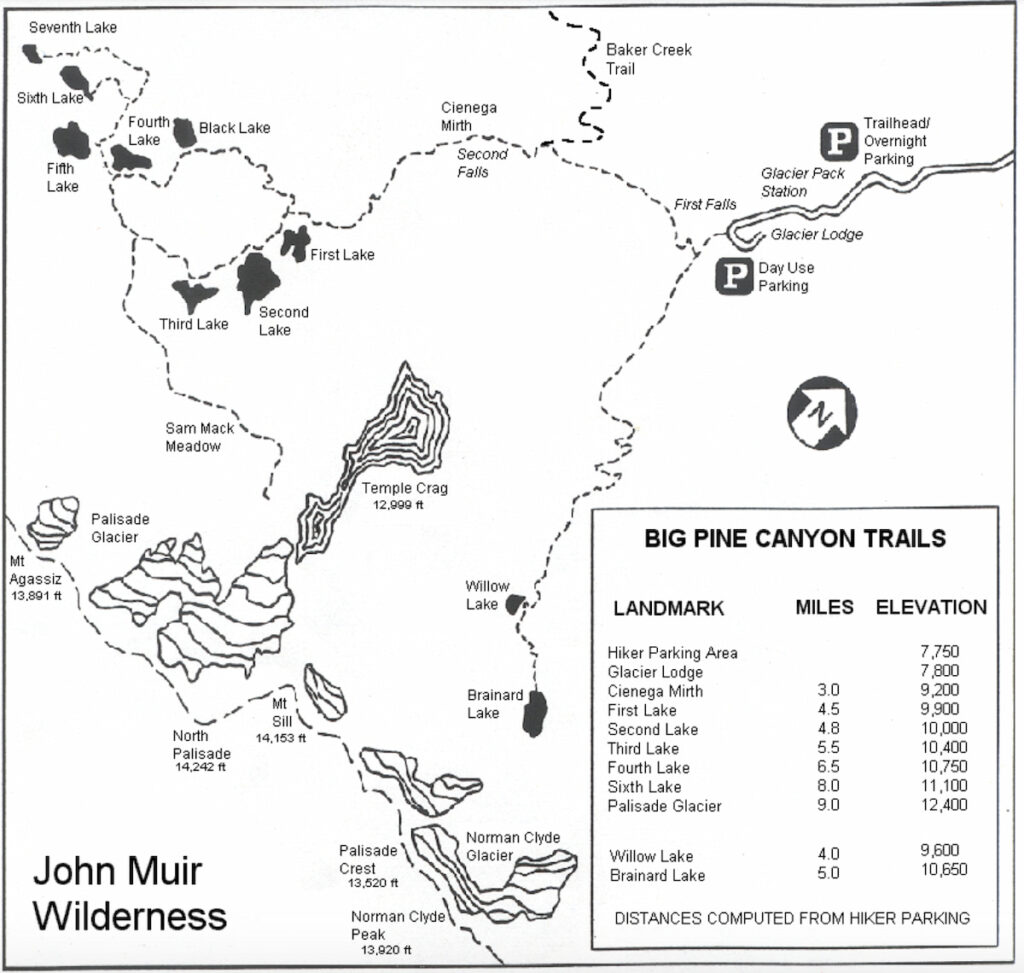
LOCATION & PARKING
The hike starts at Big Pine Creek Trailhead, which is located at the end of Glacier Lodge Rd just west of Big Pine. You will need to park at Big Pine Creek Overnight Parking lot if you plan on backpacking, as the parking lot at the trailhead is designated for day use only. I recommend that you drop off your packs at the trailhead first and that you arrive before 7 am to secure a parking spot. You can also pay $5 to park overnight at Glacier Lodge, which saves you an additional 1.2 miles round trip since it is much closer to the trailhead. If you prefer this option, I suggest calling the lodge in advance to confirm that they are still offering overnight parking for non-guests. Vault toilets are available for use at the day use and overnight parking lots.
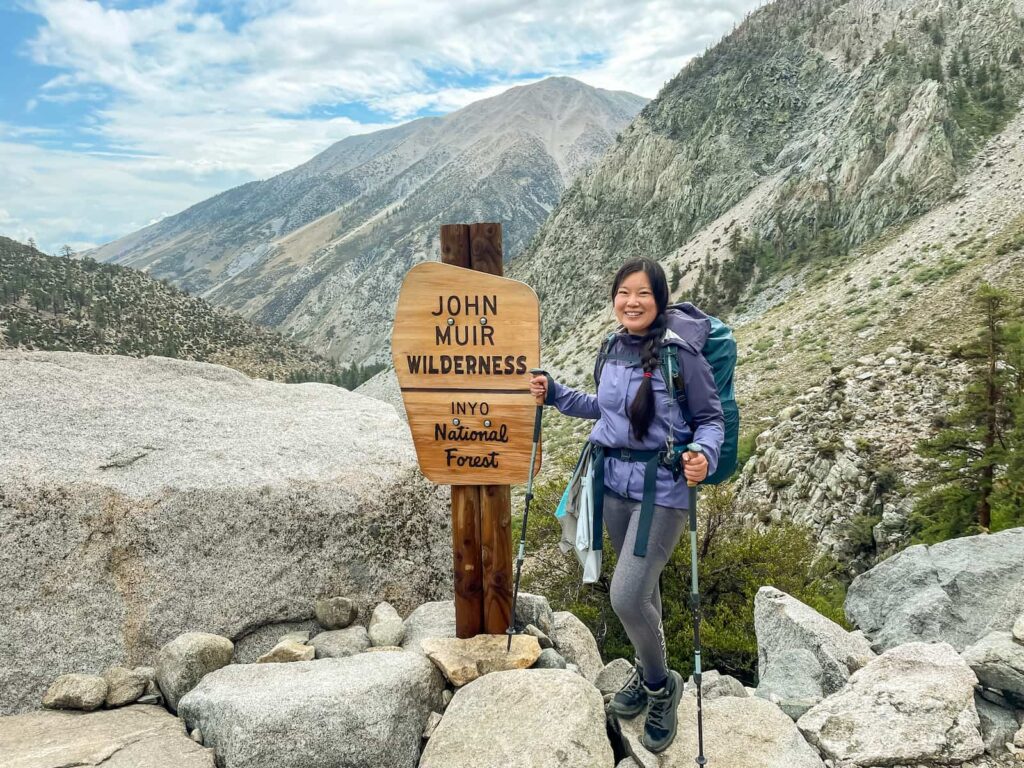
DISTANCE & DIFFICULTY
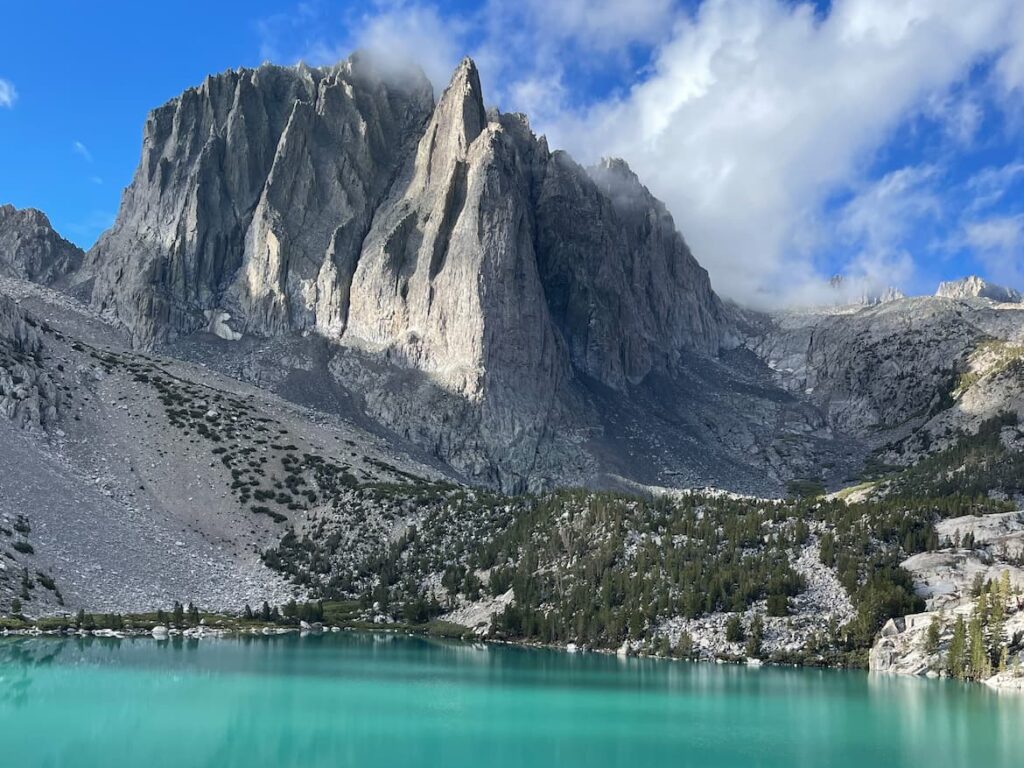
HOW TO REACH SECOND LAKE
- If you’re starting from Big Pine Creek Overnight Parking lot, do not take the Upper Trail that leads out of the parking lot to the North Fork Trail. Instead, walk along Glacier Lodge Rd to the main trailhead instead. Trust me, the views will be better!
- Make your way up the trail until you reach First Falls. These first 2 miles are steep and exposed, so a hat would definitely come in handy!
- Around the 2 mile mark, you’ll see the John Muir Wilderness sign as well as Second Falls. This is a popular photo spot with hikers.
- Lon Chaney’s Cabin is located near the 3 mile mark. This is a great place to take a break by the stream.
- You’ll reach a fork that leads to either Lakes 1-7 or Black Lake at around 4.75 miles. Take the route that heads to Lakes 1-7 and you’ll arrive at First Lake. To explore its shores, take a left at the No Fires sign.
- After an additional 0.5 miles, you’ll have made it to Second Lake!
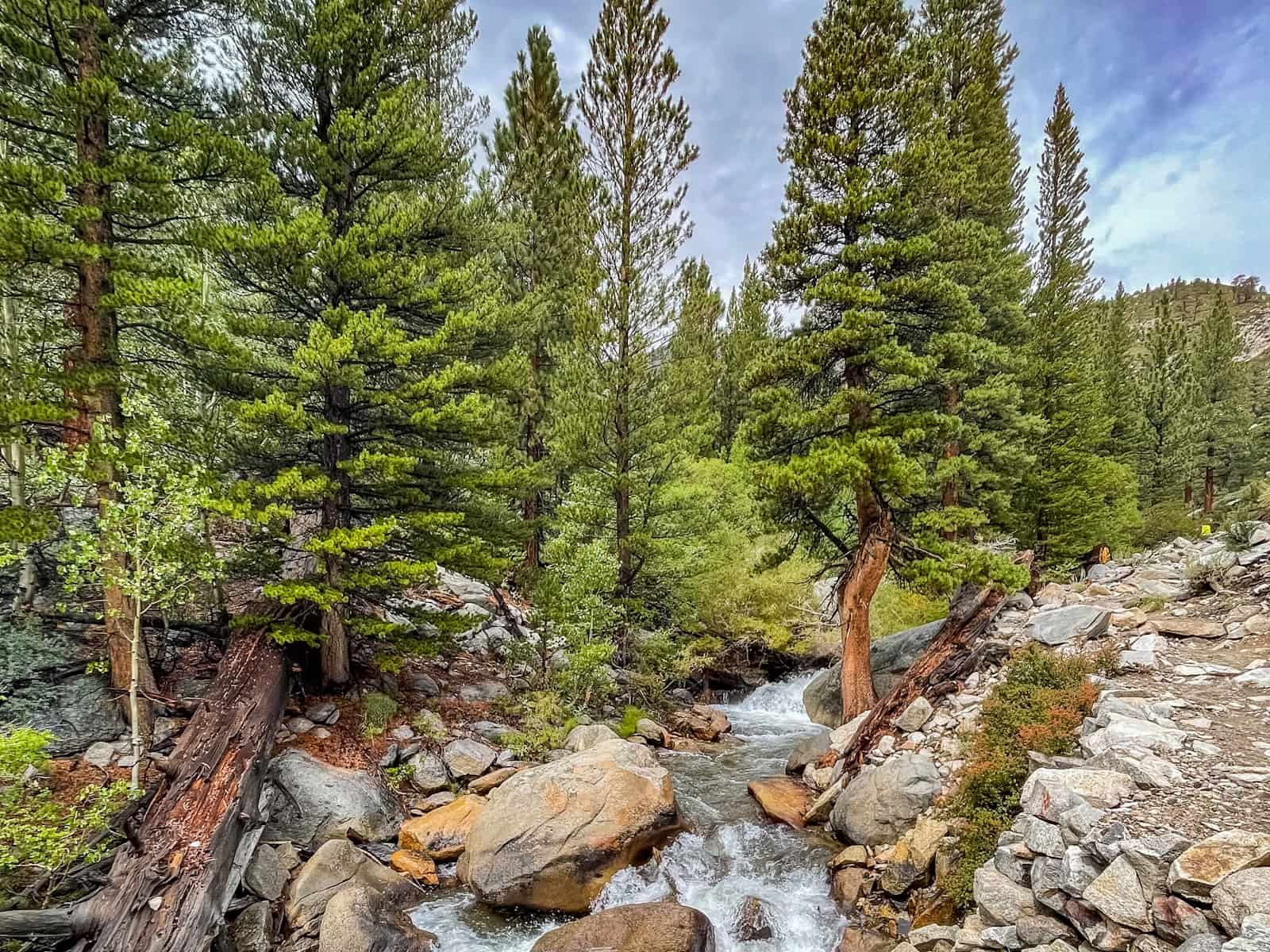
SETTING UP CAMP
Once you’re at Second Lake, it’s time to set up camp! As evening sets in, it tends to become more windy, so I recommend you build your tent once you’ve found a satisfactory camping spot. Generally, you’ll have a better chance of claiming a spot with a view of Temple Crag the earlier you arrive. There’s a granite shelf that sits above the lake that offers multiple spots, and you can look for flat spots that have been previously used. Remember to secure your tent so it doesn’t fly away when not in use, and to also store your bear canister at least 100 feet from the campsite. Also, keep in mind that you must set up camp at least 100 feet from the lakeshore.
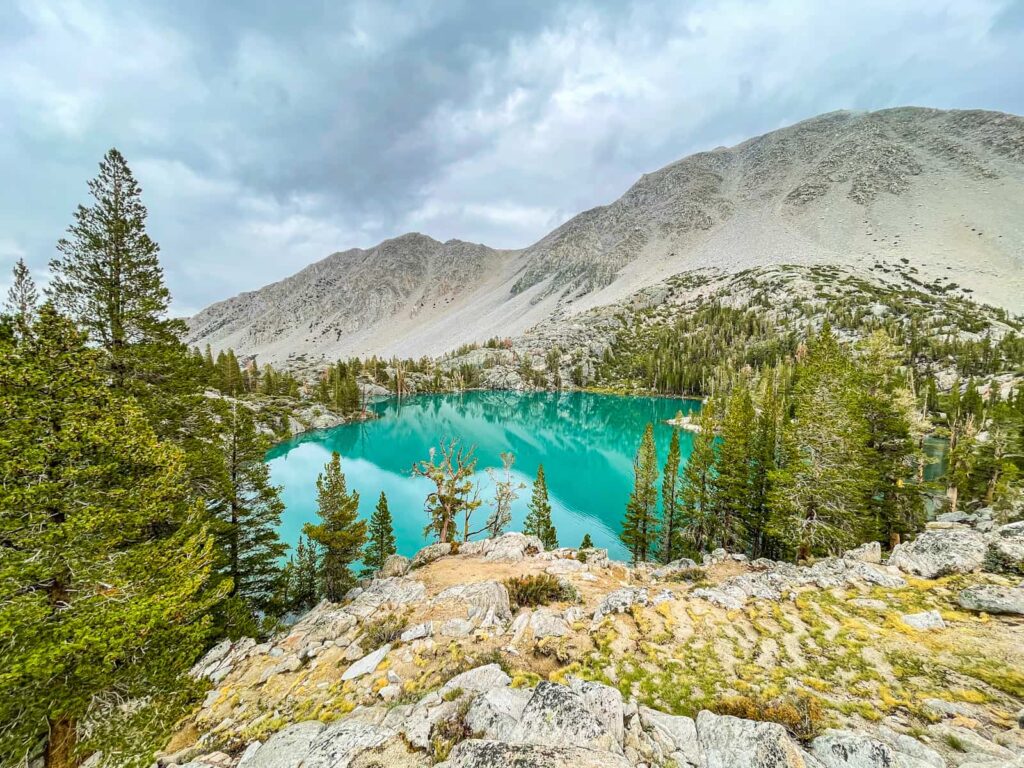
SAM MACK MEADOW & BEYOND
Though I didn’t hike past Second Lake on my visit, I hope to one day make it to Sam Mack Meadow and Palisade Glacier. Sam Mack Meadow features an icy blue river that runs through green fields and small ponds filled with fish & frogs. To get to Sam Mack Meadow, follow Glacier Trail after passing Third Lake. Take in the stunning views of First through Third Lakes along the trail to the meadow. Palisade Glacier lies beyond Sam Mack Meadow and is the southernmost glacier in North America. To get there, you must first cross the river at Sam Mack Meadow. After the initial ascent, the path becomes non-existent and requires scrambling up boulders (Class 3). Crampons/snowshoes may be needed if hiking before mid-July. Besides Sam Mack Meadow and Palisade Glacier, Lakes 4-7, as well as Summit Lake & Black Lake, can be explored. There’s just so much to see up in the Big Pine Lakes area that it may take several trips before you can see it all!
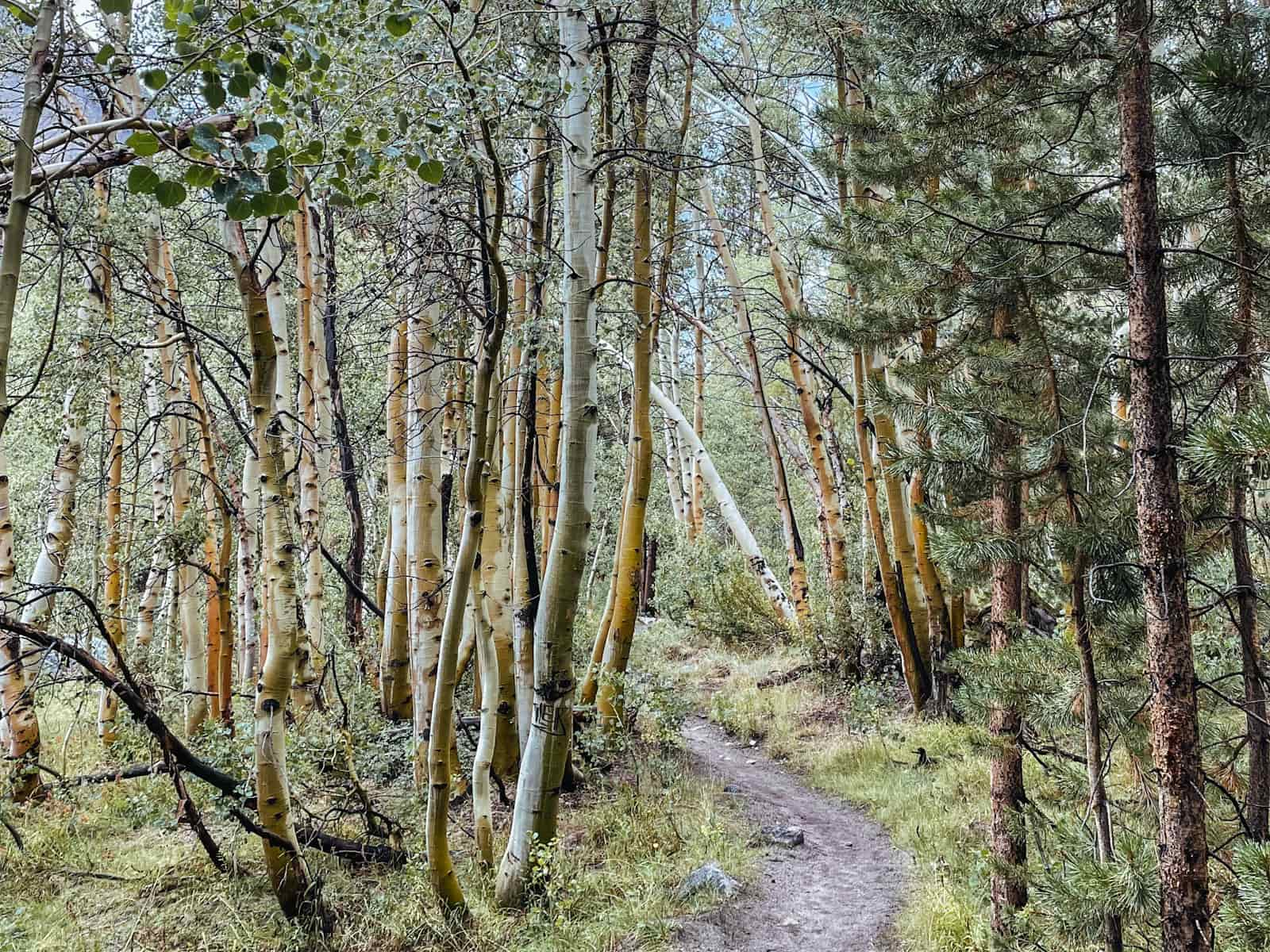
WHAT TO BRING WITH YOU
- Water. Always bring more than you think you might need! Bring at least 3 liters of water on hot days. I like to use my HydraPak for longer hikes/backpacking.
- Food. Energy bars, dehydrated backpacking meals, etc. One of my favorites is Mountain House’s Pad Thai with chicken. It’s pretty tasty for being freeze dried!
- Hiking boots. I have these Salomon hiking boots and I love them! They’re extremely comfy and have lasted me for several years now. They’re stylish and well worth the price.
- Headlamp. I was so glad I brought my Black Diamond headlamp!
- Trekking poles. Poles really help with weight distribution, especially when you’re carrying a 20+ pound backpack. I use these by Black Diamond.
- Cookware/utensils. I highly recommend MSR’s Pocket Rocket Stove Kit, which comes with cookware, utensils, and even a stove!
- Tent. This lightweight tent by ALPS Mountaineering was easy to put up while raining and held up nicely during windy conditions.
- Backpack with rain cover. I love my 55 L Maven backpacking backpack by Gregory. It comes with a lot of pockets and a rain cover, which came in useful during the rain and hail we experienced on our trip.
- Water purifier. MSR’s Guardian Gravity Purifier will do the trick!
- Stove & fuel
- Bear canister. Since you’ll be in bear territory, you’ll need a bear-proof container to store your food and toiletries in. I got the BearVault 450, which kept the bears away!
- Towel. It’s definitely handy to have a lightweight towel for drying off! I use this one by Nomadix.
- Clothes. A set of thermals would be a good idea, as it can get chilly at night even in the summer!
- Pillow. For a relaxing and comfy night’s rest, I recommend these compressible pillows from Therm-a-Rest.
- Sleeping bag & sleeping pad. I use this one by Mammut for colder temperatures. Otherwise, I typically use this 3 season sleeping bag by Mountain Hardwear.
- Hat with netting to keep the mosquitos at bay during the summer months. Fortunately, I didn’t encounter any on my trip in mid-September so I didn’t need to bring one!
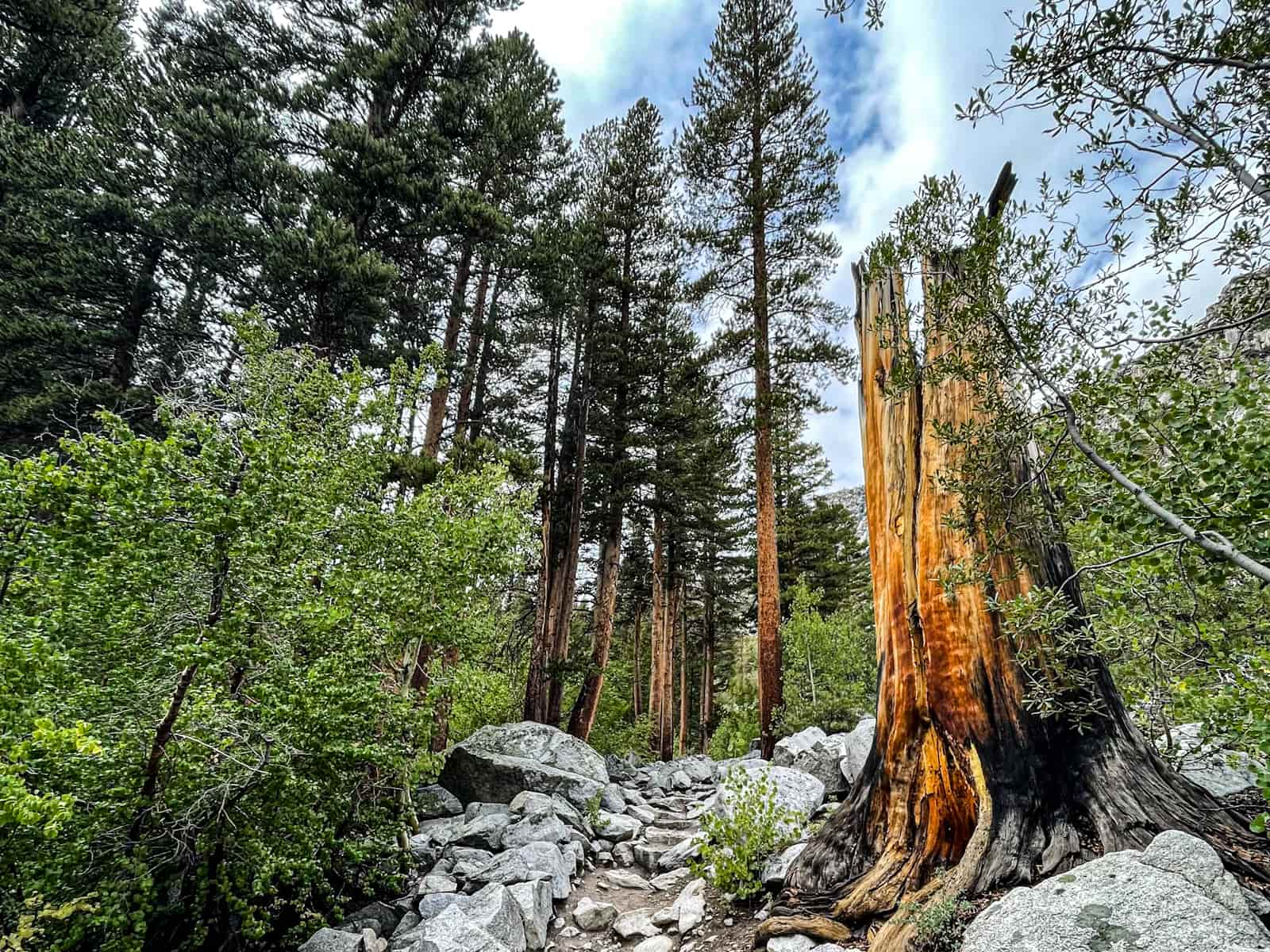
GENERAL TIPS
- Since this hike will reach a minimum elevation of 10,000 ft, you may experience acute mountain sickness. Luckily, I only experienced shortness of breath and tightness in my chest. To reduce the effects of acute mountain sickness, I recommend the following:
- Start drinking electrolytes at least 24 hours in advance. Drink 1 electrolyte per day of travel thereafter.
- Take ibuprofen before the start of your hike.
- To acclimate to the high altitude, stay at a campground nearby the night before. We stayed at Upper Sage Flat Campground, however I recommend staying at Big Pine Creek Campground if there’s availability since it is located much closer to the trailhead.
- Purchase and print your California campfire permit. Campfire permits are required on federally controlled lands in order to use portable stoves.
- When should you visit Big Pine Lakes?
- Be advised that the trails are still snowy well into June so July and August are popular months to visit.
- As the snow melts throughout the season, First thru Third Lakes turn deeper shades of turquoise. August and September, therefore, are the perfect months to plan a visit.
- If you don’t mind cooler temperatures with the possibility of snow, September thru October may also be a great time to visit. The aspen-lined sections of the trail start turning yellow in late September so you may also get to do some leaf peeping as well!
- Although it’s always a good idea to check the weather forecast prior to your departure, just note that weather in the Sierras can be unpredictable. During my trip, the forecast only called for rain. However, I was not prepared to hike in rain, thunder, and hail. The next morning, we were greeted with beautiful sunny weather!
- This trail is dog-friendly so feel free to bring your pup along on the adventure!

